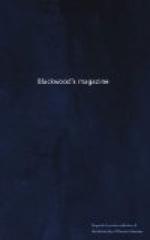Thus the very circumstance which the old historian regarded as throwing doubt on the discovery, is now one of the strongest corroborations of its truth.[2] There appear to have been several attempts to sail along the west coast, by ancient expeditions; but to the Portuguese is due the modern honour of having first sailed round the Cape. From 1412, the Portuguese, under a race of adventurous princes, had extended their discoveries; but it occupied them sixty years to reach the Line, and nearly thirty years more to reach the Cape, which they first called Cabo Tormentoso, (Stormy Cape.) But the king gave it the more lucky, though the less poetical, title which it now bears.
[2] Reunell, p. 682.
The triumph of Columbus, in his discovery of the New World in 1493, raised the emulation of the Portuguese, then regarded as the first navigators in the world; yet it was not until four years after, that their expedition was sent, to equalize the stupendous accession to the Spanish domains, by the possession of the East. In July 1497, Gama sailed, reached Calicut May 2, 1498, and returned to Portugal, covered with well-earned renown, after a voyage of upwards of two years.
Having given this brief outline of the divisions and character of the mighty continent, which seemed important to the better understanding of the immediate subject, we revert to the intelligent and animated volumes of Captain (now Major) Harris.
A letter from the Bombay government, 29th April 1841, gave him this distinguished credential:—
“Sir—I am directed to inform you that the Honourable the Governor in Council, having formed a very high estimate of your talents and acquirements, and of the spirit of enterprise and decision, united with prudence and discretion, exhibited in your recently published travels through the territories of the Maselakatze to the Tropic of Capricorn, has been pleased to select you to conduct the mission which the British Government has resolved to send to Sahela Selasse, the king of Shoa, in Southern Abyssinia, whose capital, Ankober, is supposed to be about four hundred miles inland from the port of Tajura, on the African coast.”
[Then followed the mention of the vessels appointed to carry the mission.]
(Signed) “J.P. Willoughby,”
“Secretary to Government.”
The persons comprising the mission were Major W.C. Harris, Bombay Engineers, Captain Douglas Graham, Bombay army, principal assistant, with others, naturalists, draftsmen, &c., and an escort of two sergeants and fifteen rank and file, volunteers from H.M. 6th foot and the Bombay Artillery.




